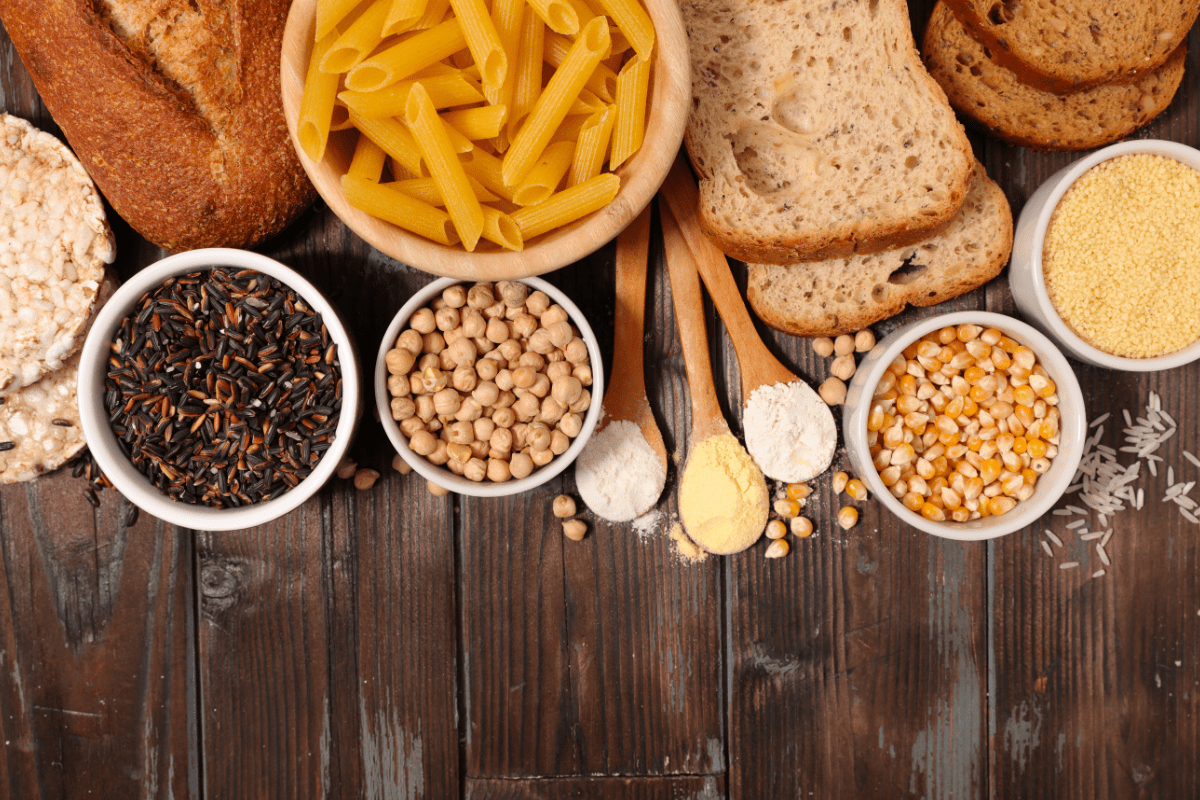All low FODMAP recipes are gluten free, however, not all gluten free recipes are low FODMAP. If you are experiencing gastrointestinal symptoms, such as painful bloating, diarrhea, stomach pains, and constipation, and want to take control of your digestive and mental health, then you may have heard that the low FODMAP diet is the solution you have been looking for. However, ridding yourself of your favorite glutenous foods may not seem like the most ideal solution. What if you may not have to?
Phase 1. During the first 2-8 weeks of the low FODMAP diet, the elimination of all high FODMAP foods is critical, known as the elimination diet. Let’s breakdown examples of what foods are high in FODMAP, and you, therefore, cannot eat temporarily:
- Vegetables: mushrooms, onion, cauliflower, artichoke, asparagus, garlic
- Fruits: apples, melons, watermelon, pears, mango, peaches, cherries, plums
- Dairy and Alternatives: cow’s milk, ice cream, soy milk, yogurt
- Protein: most legumes, marinated meats/ poultry/ seafood, some processed meats
- Breads and Cereal: wheat/rye/barley-based breads, pastas, breakfast cereals, biscuits, and snack products
- Sugars: high fructose corn syrup, honey, sugar-free confectionery
- Nuts and Seeds: cashews, pistachios
So, yes, a 100% low FODMAP diet is gluten-free, since the elimination of all fructans includes wheat, bread, and pasta.
Phase 2. You can begin to consume high FODMAP foods in moderation to determine how your body responds to each subtype individually, known as the Reintroduction phase. Each week you begin to reintroduce one FODMAP subtype at a time. While remaining on a low FODMAP diet, choose one item from each subtype to reintroduce in increasing amounts over a three-day period if no symptoms arise:
Week 1- Lactose: low FODMAP + milk, yogurt, ricotta cheese, or ice cream
Week 2- Fructose: low FODMAP + honey, mango, sugar snap peas, or orange juice
Week 3- Sorbitol: low FODMAP + avocado, apricot, yellow nectarine, or sugar-free mints
Week 4- Mannitol: low FODMAP + mushrooms, cauliflower, celery, or sweet potato
Week 5- Fructan (wheat): low FODMAP + couscous, pasta, wheat bread, or barley flakes
Week 6- Fructan (onion: low FODMAP + onion
Week 7- Fructan (garlic): low FODMAP + garlic
Week 8- Fructan (fruits): low FODMAP + raisins or grapefruit
Week 9- GOS: low FODMAP + chickpeas, green peas, soy milk, or black beans
If your body does not have an adverse reaction to fructans, specifically wheat products, then you can begin to reintroduce gluten back into your diet!
The 100% low FODMAP diet is not meant to be a life-long diet. In fact, remaining on a diet for longer than eight weeks may be counteractive since nutrient and bacterial deficiency may arise, causing additional gastrointestinal problems. Importantly, be sure to consult a clinician throughout your process.
If your body does not have any adverse reactions to gluten during the reintroduction phase, then your personalized diet, a combination of low and high FODMAP foods, will include gluten in your diet! If so, you can safely have your cake and eat it too 🙂
Unfortunately, having a gluten sensitivity is very common among our population, and many people must follow a gluten-free diet. Luckily, Epicured creates medically tailored, made-to-order gluten free meals delivered right to your door!


